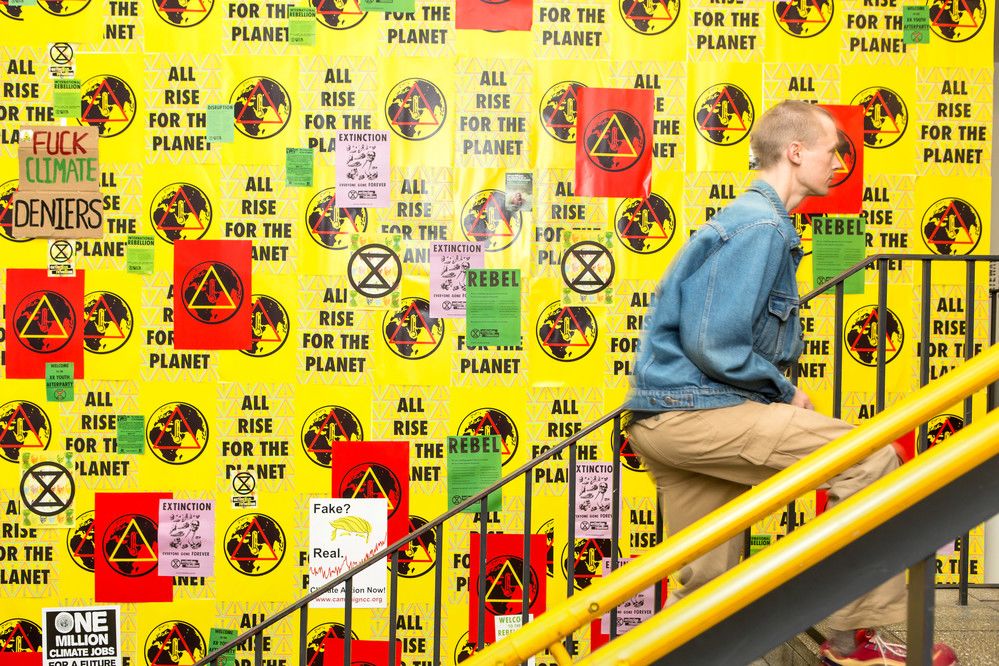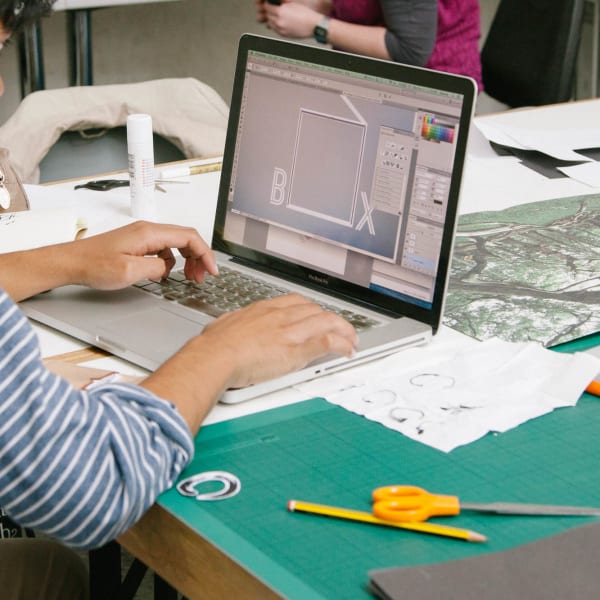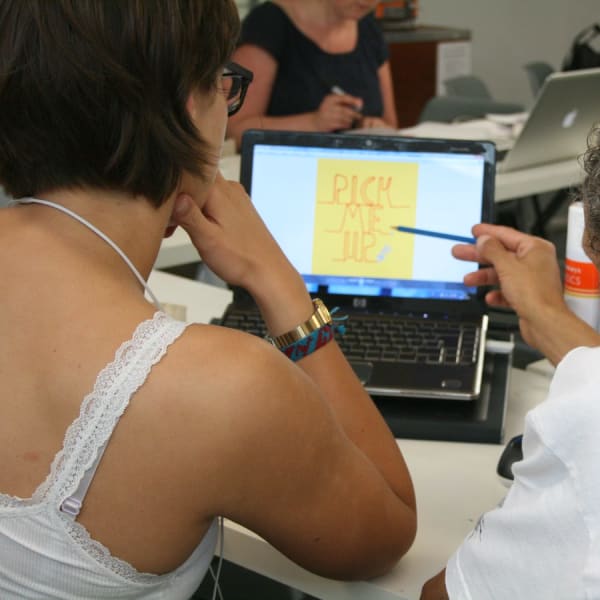How to become a graphic designer
- Written byMariana Jaureguilorda Beltran
- Published date 20 May 2021
So, you want to be a graphic designer?
Graphic design is everywhere we look, on your favourite smoothie bottle, traffic signs, posters, signs, websites... the human brain processes visuals 60,000 times faster than it processes text. This is the reason why many brands add a visual or a glyph to their logos and why graphic design is essential.
It is estimated that 94% of consumers will leave a website with poor graphic design, surprised? From multinationals to small independent boutiques, they all need a graphic designer to establish the brand’s image and presence. Graphic design statistics have revealed that this creative practice is increasingly becoming an indispensable factor in the success of today’s businesses.
With all this in mind, are you ready to kickstart your career in graphic design?
We’ve compiled some tips on how to become a graphic designer and kickstart your career in this exciting field.
So, what does a graphic designer do?
A graphic designer is responsible for creating visuals to promote a product, service or message. These visuals can be anything from a magazine, web banner, poster or flyer. Graphic designers must be creative and tech-savvy – to create eye-catching compositions together using elements such as typography, images and colour.
But how do I start? Read on...
1# Understand the fundamental basics of graphic design
No matter how you choose to become a graphic designer, you won’t get far without learning the design principles. These principles are alignment, repetition, contrast, hierarchy and balance—they’re crucial in creating any successful design. Let’s break it down:
Alignment: creates a sharper, more unified design.
Repetition: strengthens a design by tying together otherwise separate parts and, as a result, creates associations.
Contrast: is the most effective way to create emphasis and impact with your design.
Hierarchy: creates organisation.
Balance: provides stability and structure to a design, either through symmetry or tension of elements.
These are only some quick definitions but for a far more in-depth look into the Design Principles, check out our Graphic Design Principles Online Short Course.
Any graphic designer worth their game should be able to put these into practice in each design they create. The design principles work together to create a design that is both visually appealing and properly structured.
2# Be analytical
It might seem obvious, but for every discipline that requires the creation of something new, you will need to be analytical.
As a graphic designer, you will have to come up with new ideas constantly. No project is the same, all clients and projects are unique.
Graphic Designer and UAL lecturer, Ben Woodeson, emphasises the importance of analysing your work.
“Practical skills can mostly be gained through searching out information on the web. By contrast, I'd argue that the key skills are learning to listen and to think. A wonderful-looking piece of design is no use whatsoever if the reader doesn't understand what it is trying to do, or worse, if the reader takes away the wrong message, or if you solved the wrong problem!"
Similarly, Rachel Kirk highlights the importance of being curious and digging deeper into the design ideas and concepts.
“In my opinion, you need curiosity and the motivation to explore, dig deeper and uncover new ways of seeing and doing things. You need to be able to communicate your ideas and explain your design process and decisions.
Rachel suggests sharpening these skills working on design briefs, preferably in a group or with at least one more person. Talking about your design, thinking and getting and giving constructive feedback will be hugely beneficial for you.
3# Get the right tools!
Getting the right tools for graphic design can be expensive. You'll need a laptop, desktop computer, the right software (Adobe Creative Cloud or Canva Draw are two great apps you can subscribe to), a Pantone colour guide and perhaps even a pen tablet.
4# Learn how to use them!
No graphic designer can live without software. That's why you need time to master what's available. Adobe's Photoshop, Illustrator and InDesign are the obvious choices – and there are courses to help you master them.
5# Build your portfolio
A graphic design portfolio is the visual representation of all you have accomplished so far and symbolises what you hope to achieve in the future.
Competition is fierce – you need to stand out. To push your portfolio to the front, it helps to know what to include and what to leave out.
"Not every project in your folio needs to be polished and fully resolved, your process and your creative journey is as important as the final outcome. Your portfolio should visually communicate, your skills, your process, your personality and your potential. "Rachel told us.
6# Network!
We hate to say it, but your network is everything.
“Do not be afraid to use any network you have; that friend who has always dreamed of setting up a micro-business? They'd probably be delighted if you offered to design them an identity,” said Ben Woodeson.
7# Gain work experience!
Work experience is obviously a great way to be exposed to clients and the ins and outs of the business. However, don’t be deterred if you can’t find any formal work. Ben Woodeson encourages his students to set themselves tasks and keep themselves busy.
“Find jobs to do. If you have no or little experience, then set yourself "tasks", keep it simple at first, think, research, develop ideas and solve problems. As your confidence grows, start to push your ideas and results out into the world.” said Ben Woodeson.
------------------------------------------------------------------------
If you need advice on how to develop a knock-out portfolio of work, our How to create a graphic design portfolio article is full of tips and tricks to help you put together your best pieces of work to show off your skills for university applications or freelance commissions.
And If you’d like to master your graphic design skills, check out our wide range of graphic design courses, for all levels.
You can also take a look at our upcoming summer 2021 short courses as well as our range of online courses to find out how they can help you.










